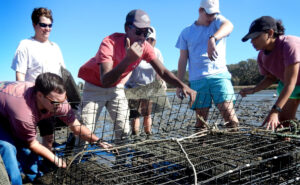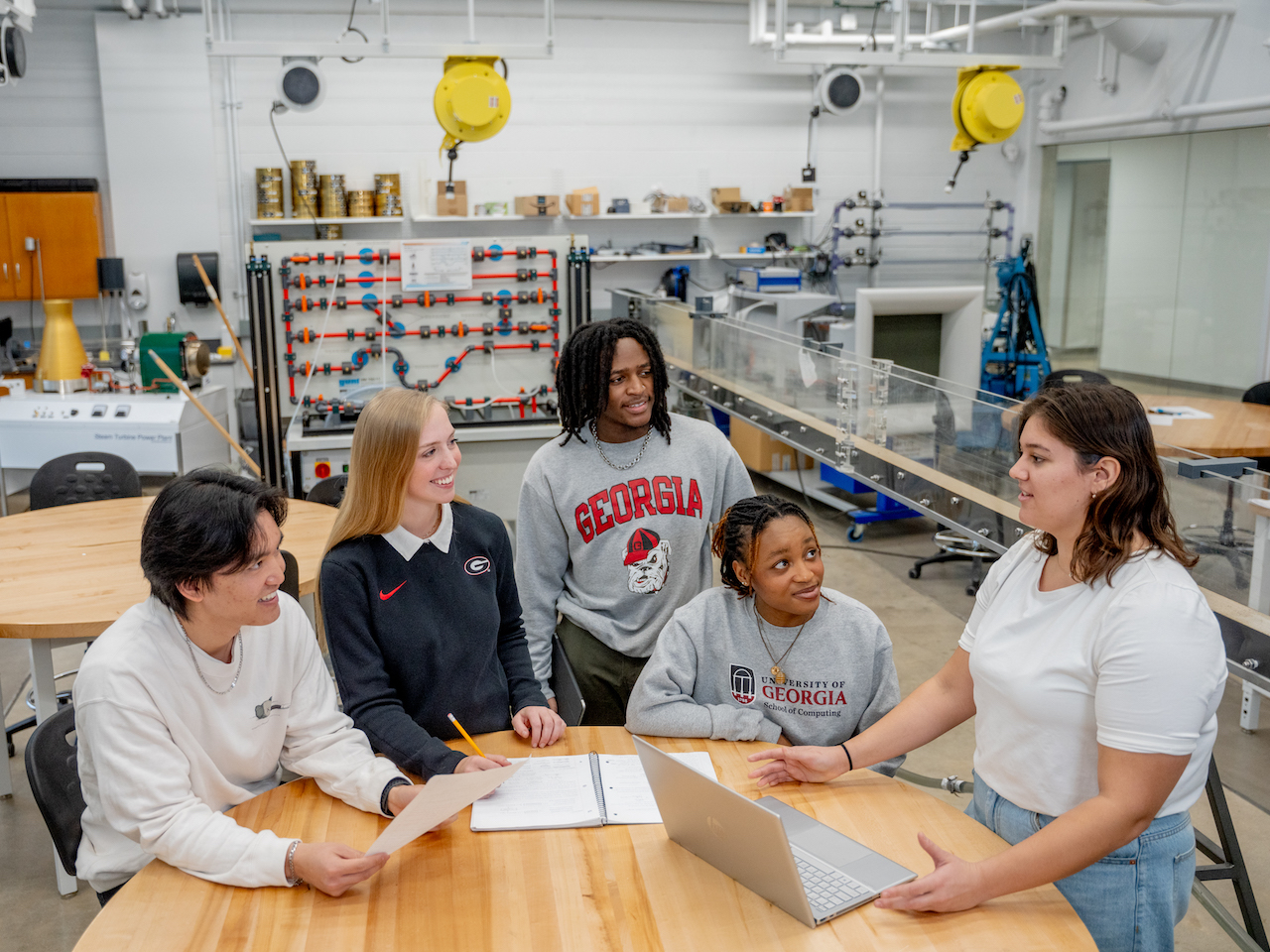 Two teams of engineering students are working with UGA Marine Extension and Georgia Sea Grant to design equipment that could help future oyster farmers work more efficiently and increase production.
Two teams of engineering students are working with UGA Marine Extension and Georgia Sea Grant to design equipment that could help future oyster farmers work more efficiently and increase production.
The eight students, representing agricultural, biological and mechanical engineering, traveled to Skidaway Island in Savannah recently to meet with the staff at the UGA oyster hatchery. Following a brief lesson on aquaculture and the Georgia coast, the students toured the hatchery and went by boat to oyster beds on the Skidaway River.
There, during low tide, they lifted the mesh bags of oysters off plastic racks, shook the bags and rinsed them to remove any sediment before it could attach to the oyster shells. In cooler weather, the bags only have to be shaken and rinsed every other week or so, said Rob Hein, an extension agent at Marine Extension and Georgia Sea Grant. The job is much more labor intensive in warm weather, when the heat increases the rate at which the sediment will attach, he said.
“In the summertime there would be so much stuff growing, you’d have to flip them two times a week,” Hein said.
The students are exploring ways to make that process simpler, including designs that use mechanics to lift and lower the bags and racks that are buoyant and can be turned over easily in the water.
The project came about as a result of an engineering professor’s visit to Marine Extension and Georgia Sea Grant last summer. Sudhagar Mani, associate professor and Southeastern Conference University Faculty Scholar in chemical, materials and biomedical engineering, toured the shellfish lab and the oyster hatchery and recognized the need for a mechanical system to improve production.
He hopes that students, who are doing this project as their senior capstone, will soon have a final design and prototype.
“Maybe the testing in the field could be the next step,” Mani said.
During their time on the river, the students talked about different options and used cages loaded with oysters on makeshift pontoons to see if that was an easier way to agitate and rinse the bags to remove sediment. They struggled to walk in the marsh mud and had to team up to lift the heavy cages out of the water.
“We’re learning what the farmers have to deal with,” said Shane Zaunbrecher, a senior agricultural engineering major from Alpharetta.
Currently, Georgia oyster farmers that use gear have to comply with policies written for crabbers. Those policies stipulate that gear must be on the bottom of the waterways and can only stand 24-36 inches tall so that they don’t interfere with boats. Oyster gear may not float on the surface of the water or be suspended in the water column.
Oyster farming is new to Georgia, however, so the policies could change, Tom Bliss, director of the UGA Shellfish Research Lab, told the students. He encouraged them to not be limited in their designs by current regulations.
“Anything you think would work, just throw it out there and see what happens,” Bliss said.
The oyster hatchery, where Bliss and his team create baby oysters, or spat, was launched 2015. The spat is given to local growers who hold state permits to harvest shellfish along the Georgia coast. By 2018, the hatchery is expected to produce between 5 million and 7 million spat per year, with an annual estimated value between $1 million and $2 million.
The goal is to attract a commercial hatchery and businesses related to oyster production to the area, which would provide jobs and greater economic development opportunities on the coast.


